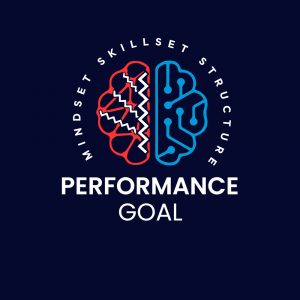Stay In The Game
Our “Stay in the Game” program, empowers organisations to thrive through a 12-month tailored training model that addresses specific needs identified via comprehensive analysis.
We Help Organisations and Individuals Perform Better
Stay in the Game
Request further information and availability on our “Stay In The Game” course.
“Stay in the Game” is a marketing term for a dynamic 12-month tailored training model designed to address specific organisational needs through comprehensive analysis. By leveraging AI-driven insights, innovative workshops, and a results-focused approach, we extend the impact far beyond the training room.
Traditional training models often involve selecting courses reactively, addressing profitability concerns or perceived issues within the organisation. These methods can lack precision and sustainability.
In contrast, “Stay in the Game” adopts a data-driven, analytical approach that emphasizes commitment and a trusted partnership. This model delivers robust, measurable outcomes, ensuring long-term value and meaningful transformation.
The analysis phase focuses on diagnosing organisational and individual training needs over a one-month timescale.
This involves leveraging analysis to assess key challenges and priorities, as part of this process we will identify key stakeholders to we interview, while deploying interactive questionnaires to gather staff perspectives, and using self-assessments to identify personal growth areas, ensuring a comprehensive understanding of training requirements.
Delivered over a 9 month period, with quarterly milestones the custom training program will be focusing on organisational needs through intensive, targeted content. It includes interactive workshops for skill development and specialised training courses in areas such as leadership and organisational effectiveness.
Focusing on sustained progress through quarterly coaching sessions, we will use AI-driven digital tools for performance tracking, and quarterly reviews to refine strategies based on outcomes. This approach ensures ongoing support, accountability, and alignment with organisational goals.
Towards the end of the program we provide a structured review within training programs to ensure participants fully consolidate their knowledge and skills. The review period incorporates interactive activities, assessments, and discussions to reinforce learning, address knowledge gaps, business reporting.
The Importance of Measured Outcomes in a 12-Month Staff Training Program
In the context of a 12-month staff training program, measured outcomes serve as a critical framework for evaluating success, ensuring accountability, and driving continuous improvement. These outcomes transform the abstract concept of learning and development into tangible evidence of progress, providing clarity and alignment for all stakeholders involved.
Aligning Training Goals with Organisational Objectives
A structured staff training program is typically designed to address specific organisational goals, such as improving productivity, fostering innovation, or enhancing employee engagement. Measured outcomes ensure that the training aligns with these objectives by providing a clear benchmark for success. For instance, if the goal is to increase team efficiency, metrics like task completion time or project turnaround rates can be tracked to assess whether the training is achieving its intended impact.
Tracking Progress and Maintaining Focus
A year-long training program can be challenging to manage without periodic checkpoints. Measured outcomes allow for the establishment of interim goals, helping to maintain momentum and focus throughout the program. By evaluating key performance indicators (KPIs) at regular intervals, organisations can identify trends, celebrate milestones, and ensure that participants remain engaged and motivated.
Identifying Gaps and Opportunities for Improvement
Not all training initiatives will produce immediate or uniform results. Measuring outcomes enables organisations to pinpoint areas where the training may be falling short, such as low retention rates of specific skills or a lack of application in real-world scenarios. This feedback can guide adjustments to the program’s content, delivery methods, or pacing, ensuring that it evolves to meet the needs of the participants effectively.
Demonstrating Return on Investment (ROI)
Training programs represent a significant investment of time, resources, and funding. Measured outcomes provide a quantifiable way to evaluate ROI by linking the program’s results to key business metrics. For example, if the training focuses on customer service skills, improvements in customer satisfaction scores or reduced complaint rates can serve as evidence of the program’s value. This data is invaluable for justifying the training budget and securing support for future initiatives.
Enhancing Participant Accountability
When outcomes are clearly defined and measured, participants are more likely to take ownership of their learning journey. Knowing that their progress will be assessed creates an environment of accountability, encouraging employees to engage fully with the program and apply the skills they’ve acquired. This accountability also fosters a culture of continuous learning and professional development within the organisation.
Building Organisational Credibility and Trust
Organisations that invest in and measure the effectiveness of staff training demonstrate a commitment to their employees’ growth and the overall success of the business. Transparent reporting of outcomes builds trust among employees, stakeholders, and customers, reinforcing the organisation’s reputation as a forward-thinking and responsible entity.
Driving Long-Term Impact
Ultimately, the goal of a 12-month training program is not just to impart knowledge but to create lasting behavioural and cultural change. Measured outcomes provide a way to evaluate whether these changes endure beyond the completion of the program. Long-term metrics, such as sustained improvements in employee retention, productivity, or innovation, offer insights into the program’s lasting impact.
By integrating measured outcomes into a 12-month staff training program, organisations ensure that their efforts are purposeful, evidence-based, and aligned with strategic goals. This approach not only maximizes the effectiveness of the training but also reinforces the organisation’s commitment to fostering a skilled and empowered workforce.
Schedule a Meeting
Interested and want to learn more:
Schedule a Meeting or Contact Us
